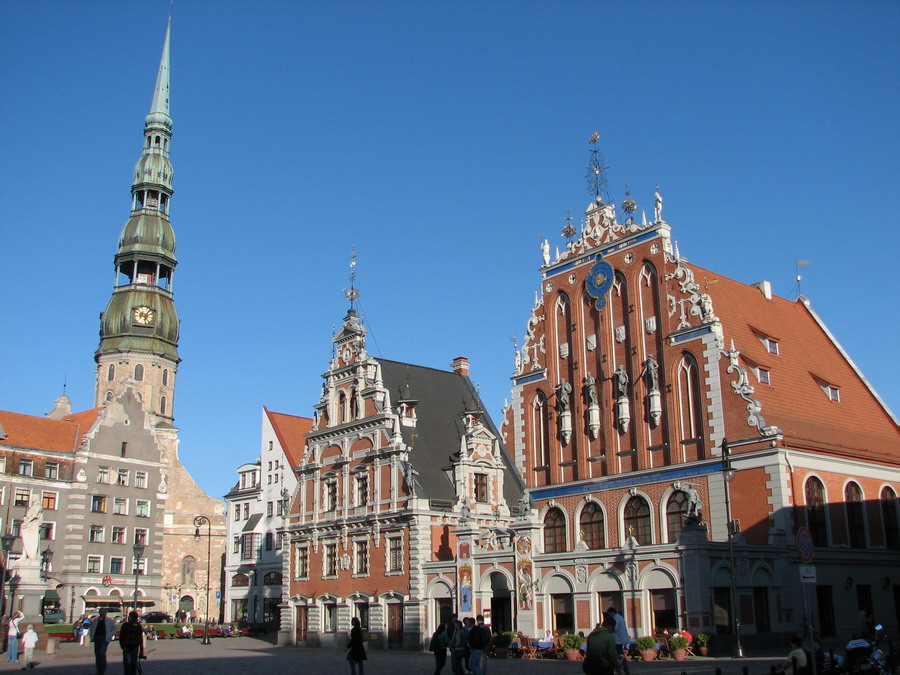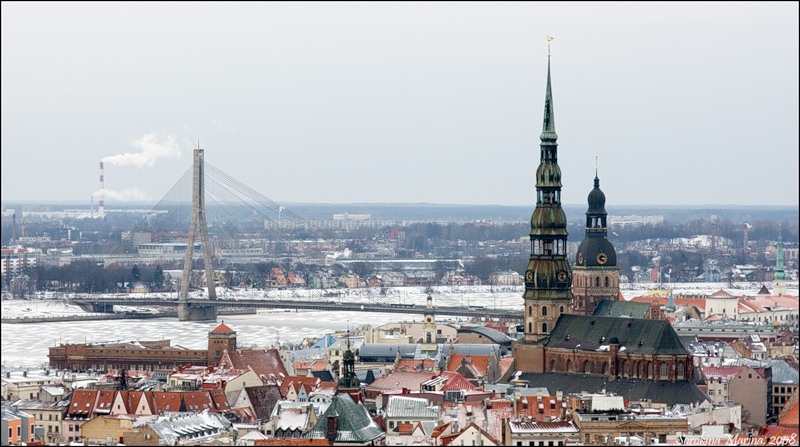St. Peter's Church (Latvian: Svētā Pētera Evaņģēliski luteriskā baznīca) is a Lutheran church in Riga, the capital of Latvia, dedicated to Saint Peter. It is a parish church of the Evangelical Lutheran Church of Latvia.
History
First mention of the St. Peter's Church is in records dating to 1209. The church was a masonry construction and therefore undamaged by a city fire in Riga that year. The history of the church can be divided into three distinct periods: two associated with Gothic and Romanesque building styles, the third with the early Baroque period. The middle section of the church was built during the 13th century, which encompasses the first period. The only remnants of this period are located in the outer nave walls and on the inside of a few pillars in the nave, around which larger pillars were later built.
First reconstruction
The newly renovated church served for a mere 29 years, for lightning struck and set fire to the tower and church 10 May 1721. Only the church and tower walls remained standing after the fire. Reconstruction of the church began immediately under the direction of the master carpenter Tom Bochum and master mason Kristofer Meinert. By 1723 the building already had a temporary roof. Johann Heinrich Wilbern took over supervision of the project in 1740, and under his direction a new 69.6 metres (228 ft) steeple was built in 1746. The steeple was covered with copper-plate and the rooster was gilded in 1746–47. Christoph Haberland designed a new marble pulpit for the church, which was built in Italy in 1793. In 1794 Haberland renovated the wooden vaulted ceilings in the central sections of the nave. The interior walls were plastered and the lower sections of the pillars were covered with oak panels in 1885 under the direction of architect Reinhold Georg Schmaeling (1840–1917).
Second reconstruction
Artillery fire destroyed the church on 29 June 1941. Conservation and restoration began 1954 with research by architect Pēteris Saulītis. The work was carried out from 1967 to 1983 under the direction of Saulītis and architect Gunārs Zirnis.[5] Renovation began with the metal tower frame. A rooster – a precise reproduction of the previous rooster and the seventh rooster in all – was placed atop the steeple 21 August 1970. The renovated tower clock began to show time in July 1975. According to tradition, it has only an hour hand. The bell music began in 1976; it plays the Latvian folk melody "Rīga dimd" five times a day and bells ring at the top of every hour. The tower has an elevator installed that allows visitors a view of Riga from a height of 72 metres (236 ft). Renovation of the interior of the church ended in 1984. The polish company "PKZ" restored the main facade and portals in 1987–91. The St. Peter's Latvian Lutheran congregation resumed services in the church 1991, and the church was returned to the ownership of the Evangelical Lutheran Church of Latvia on 4 April 2006.
During World War II, the church lost an important object of cultural heritage - an impressive bronze menorah made in 1596 - which was taken to the town of Włocławek by German colonisers from Riga, resettled during "Heim ins Reich" action to annexed Polish territories. The 310 cm high and 378 cm wide menorah, previously called a standing candleholder, was ordered by the City Council of Riga to the metal founder Hans Meyer’s Riga foundry. After the war, it was displayed in Włocławek's Basilica Cathedral of the St. Mary of Assumption. On 1 March, 2012 this piece of the Late Renaissance art returned to its ancient home, as a result of an agreement on the repatriation of cultural properties.











